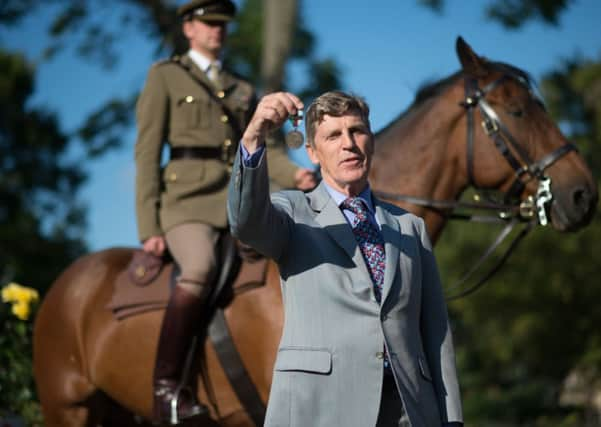The real War Horse and a cat who saved a sinking ship


General Jack Seely and his horse Warrior arrived at the Western Front on August 11, 1914. They stayed there throughout the duration of the Great War, surviving machine gun attacks and falling shells at the Battle of the Somme.
By the end of the conflict, the general had won several medals and merited mention in dispatches five times, becoming commander of the Canadian Cavalry Brigade. Warrior, on the other hand, quietly returned to the family’s estate on the Isle of White where he lived until his death at the age of 33.
Advertisement
Hide AdAdvertisement
Hide AdOne of around 800,000 horses and mules drafted into the war effort, for decades Warrior’s heroism lay long forgotten. However, yesterday when the animal dubbed “the horse the Germans could not kill” was posthumously awarded the Honorary PDSA Dickin Medal his efforts of a century ago were given official recognition.
The tales of how Warrior had to be dug out of the mud of Passchendaele and how he was twice trapped under the burning beams of his stables and survived countless charges at the enemy had been told time and again by successive generations of the Seely family, but there was something special about finally having the details recorded for posterity.
“Warrior’s story, which I grew up hearing at my mother’s knee, was lost in time to the wider world. But now he rides again 100 years later,” said broadcaster Brough Scott, grandson of General Seely who accepted the award presented by veteran war reporter Kate Adie. “My family and I are more than honoured that Warrior has been given this award on behalf of all the animals that also served; we are truly humbled. I only wish Jack Seely were here today to witness Warrior receiving the animal equivalent to the Victoria Cross.”
The medal, instituted by the PDSA’s founder Maria Dickin in 1943 is recognised as the highest award an animal can achieve while serving in a military conflict.
Advertisement
Hide AdAdvertisement
Hide AdSince its introduction, 65 Dickin Medals have been awarded to 29 horses, 32 Second World War messenger pigeons, three other horses and one cat. Behind every one of those statistics is a tale that proves that old adage that truth is stranger than fiction.
Take the cat. He was called Simon and in 1948 he was found wandering the dockyards of Hong Kong by a sailor on the Royal Navy sloop HMS Amethyst. Taken on board, it was the following year when the ship became trapped for three months on the Yangtze River that he proved his worth.
As the Chinese civil war raged, not only did he survive injuries from a cannon shell, which had threatened to sink the ship, but in the later citation the cat was credited with not only killing off a rat infestation, but his presence was said to have been crucial in raising moral.
If that sounds extraordinary it’s worth taking a glance at the other recipients. The list includes a pigeon called Gustav who brought the first message back from the Normandy beaches on June 6, 1944, a Border Collie named Rob who served with the Special Air Service during the Second World War, completing 20 parachute descents during the North African Campaign and a pair of Boxers, aptly named Punch and Judy, who in 1946 saved the lives of two British officers in Palestine by attacking a nationalist
Advertisement
Hide AdAdvertisement
Hide Ad“Warrior’s gallantry and devotion to duty throughout the First World War reflects the bravery shown by the millions of horses, dogs and pigeons engaged in the war,” said the PDSA’s director Jan McLoughlin at yesterday’s ceremony. “They were used for transport, communication and companionship. In this anniversary year there can surely be no more fitting way to honour the bravery and sacrifice that millions of noble animals displayed during the conflict.”